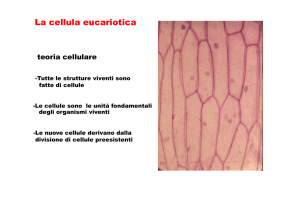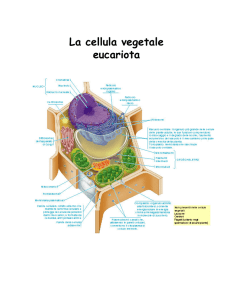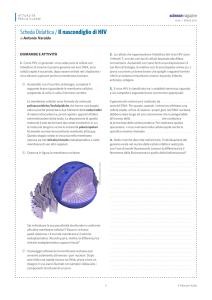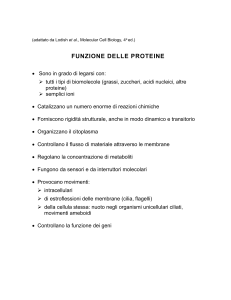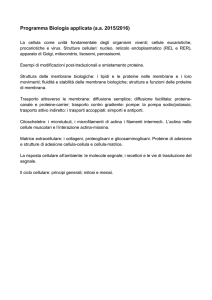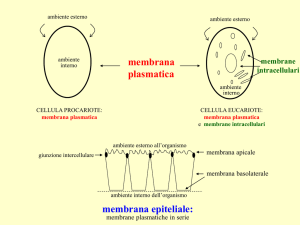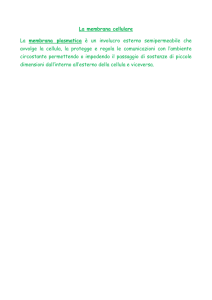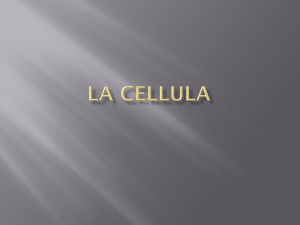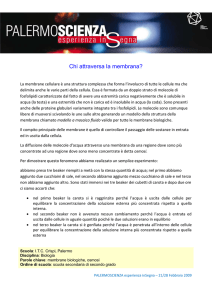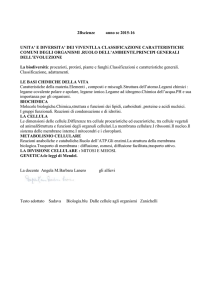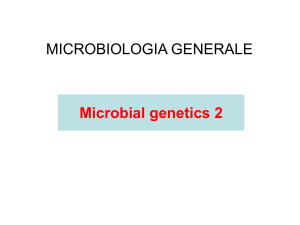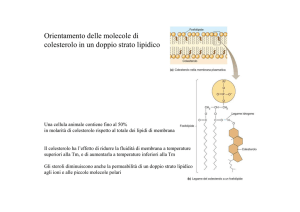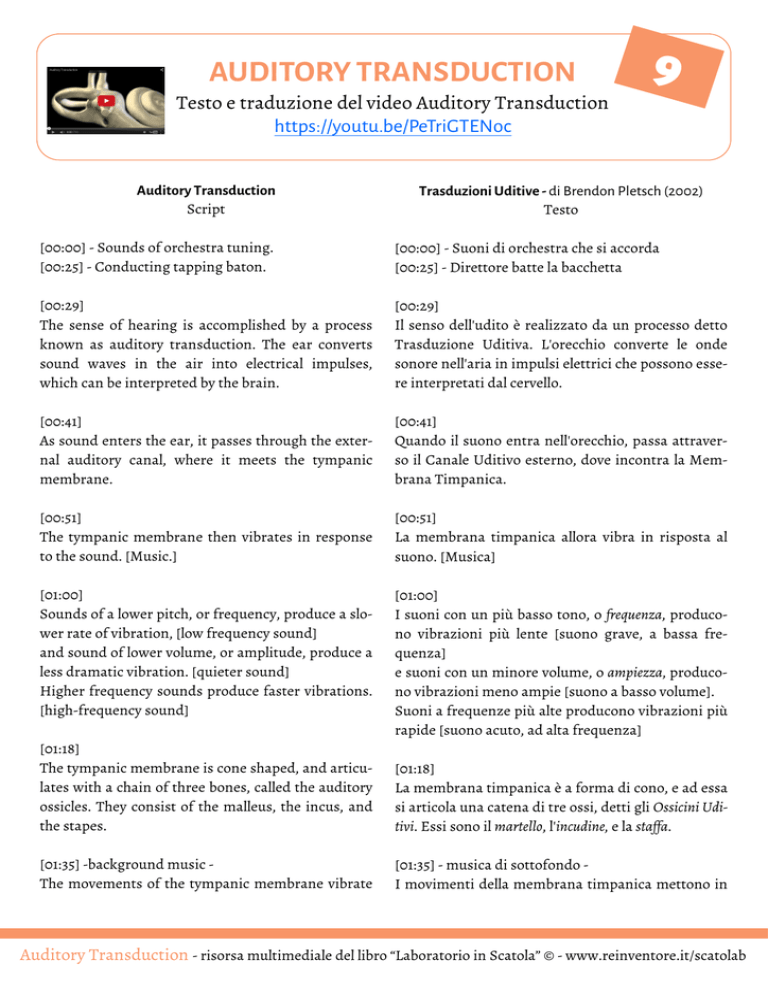
AUDITORY TRANSDUCTION
9
Testo e traduzione del video Auditory Transduction
https://youtu.be/PeTriGTENoc
Auditory Transduction
Script
Trasduzioni Uditive - di Brendon Pletsch (2002)
Testo
[00:00] - Sounds of orchestra tuning.
[00:25] - Conducting tapping baton.
[00:00] - Suoni di orchestra che si accorda
[00:25] - Direttore batte la bacchetta
[00:29]
The sense of hearing is accomplished by a process
known as auditory transduction. The ear converts
sound waves in the air into electrical impulses,
which can be interpreted by the brain.
[00:29]
Il senso dell'udito è realizzato da un processo detto
Trasduzione Uditiva. L'orecchio converte le onde
sonore nell'aria in impulsi elettrici che possono essere interpretati dal cervello.
[00:41]
As sound enters the ear, it passes through the external auditory canal, where it meets the tympanic
membrane.
[00:41]
Quando il suono entra nell'orecchio, passa attraverso il Canale Uditivo esterno, dove incontra la Membrana Timpanica.
[00:51]
The tympanic membrane then vibrates in response
to the sound. [Music.]
[00:51]
La membrana timpanica allora vibra in risposta al
suono. [Musica]
[01:00]
Sounds of a lower pitch, or frequency, produce a slower rate of vibration, [low frequency sound]
and sound of lower volume, or amplitude, produce a
less dramatic vibration. [quieter sound]
Higher frequency sounds produce faster vibrations.
[high-frequency sound]
[01:00]
I suoni con un più basso tono, o frequenza, producono vibrazioni più lente [suono grave, a bassa frequenza]
e suoni con un minore volume, o ampiezza, producono vibrazioni meno ampie [suono a basso volume].
Suoni a frequenze più alte producono vibrazioni più
rapide [suono acuto, ad alta frequenza]
[01:18]
The tympanic membrane is cone shaped, and articulates with a chain of three bones, called the auditory
ossicles. They consist of the malleus, the incus, and
the stapes.
[01:18]
La membrana timpanica è a forma di cono, e ad essa
si articola una catena di tre ossi, detti gli Ossicini Uditivi. Essi sono il martello, l'incudine, e la staffa.
[01:35] -background music The movements of the tympanic membrane vibrate
[01:35] - musica di sottofondo I movimenti della membrana timpanica mettono in
Auditory Transduction - risorsa multimediale del libro “Laboratorio in Scatola” © - www.reinventore.it/scatolab
AUDITORY TRANSDUCTION
9
Testo e traduzione del video Auditory Transduction
https://youtu.be/PeTriGTENoc
the ossicles, passing on the information of frequency and amplitude.
vibrazione gli ossicini, che mandano avanti l'informazione di frequenza e ampiezza.
[01:44]
The three bones pivot together on an axis shown here in red.
[01:44]
I tre ossicini ruotano insieme su un asse mostrato in
rosso.
[01:55]
The pivotal axis is due to a series of ligaments which
hold the bones in place within the middle ear cavity.
[01:55]
L'asse di rotazione è dovuto a una serie di legamenti
che tengono gli ossi in posizione all'interno della cavità dell'orecchio medio,
[02:02]
The anterior malleal ligament, and the posterior incudal ligament, are of particular importance for the
pivotal axis. Two structures which normally obscure
this view of the middle ear have been removed.
02:17 They are the chordae tympani nerve, 02:22 and
the tendon of the tensor tympani muscle.
[02:02]
il legamento anteriore del martello e il legamento posteriore dell'incudine sono di particolare importanza per
l'asse di rotazione. Due strutture che normalmente
nascondono questa visuale dell'orecchio medio sono
state rimosse 02:17 Esse sono il nervo corda del timpano, 02:22 e il tendine del muscolo tensore del timpano.
[02:24]
Through the ossicles, the vibrations of the tympanic
membrane are transferred to the footplate of the
stapes.
[02:24]
Attraverso gli ossicini, le vibrazioni della membrana
timpanica sono trasferite alla base della staffa.
[02:31] - music -
[02:31] - musica -
[02:39]
The stapes moves with a piston-like action, which
sends vibrations into a structure called the bony labyrinth. [02:51] The labyrinth is filled with a fluid
called perilymph. If it were a completely closed and
inflexible system, the movement of the stapes would
be unable to displace the perilymph, and therefore
unable to send vibrations into the bony structure.
[03:08] Due to the flexibility of a membrane called
the round window, [03:11] the stapes movement can
displace the perilymph, allowing vibrations to enter
[02:39]
La staffa si muove come un pistone, che manda le
vibrazioni in una struttura detta il labirinto osseo
[02:51] Il labirinto è riempito di un fluido detto perilinfa. Se fosse un sistema completamente chiuso e
inflessibile, il movimento della staffa non potrebbe
muovere la perilinfa, e pertanto sarebbe incapace di
mandare vibrazioni nella struttura ossea.
[03:08] Per la flessibilità di una membrana detta finestra ovale, [03:11] il movimento della staffa può
spostare la perilinfa, permettendo alle vibrazioni di
Auditory Transduction - risorsa multimediale del libro “Laboratorio in Scatola” © - www.reinventore.it/scatolab
AUDITORY TRANSDUCTION
9
Testo e traduzione del video Auditory Transduction
https://youtu.be/PeTriGTENoc
the labyrinth. [03:18 music]
entrare nel labirinto [03:18 musica]
[03:25]
The corridor leading to the round window is found
within the spiral portion of the bony labyrinth
known as the cochlea. Vibrations produced by the
stapes are drawn into the spiral system [03:36], and
return to meet the round window [03:41].
[03:25]
Il corridoio che porta alla finestra ovale si trova nella
parte a spirale del labirinto osseo detta coclea. Le vibrazioni prodotte dalla staffa sono condotte nel sistema a spirale [03:36], e ritornano a incontrare la
finestra ovale [03:41].
[03:46]
The portion of the spiral passage in which vibrations
ascend to the apex of the cochlea is called the scala
vestibuli. [03:55] The descending portion of the passage is called the scala tympani.
[04:00] A third structure, called the cochlear duct, is
situated between the scala vestibuli and the scala
tympani. [04:09] The cochlear duct is filled with a
fluid called endolymph, and when viewed in crosssection, the membranes separating the two fluid filled systems are visible. They are [04:20] Reissner’s
membrane, and the [04:22] basilar membrane.
[03:46]
La porzione del passaggio a spirale in cui le vibrazioni ascendono alla sommità della coclea è detta scala
vestibuli. [03:55] La porzione discendente del passaggio è detta scala timpani.
[04:00] Una terza struttura, detta dotto cocleare, è situata tra la scala vestibuli e la scala timpani. [04:09]
Il dotto cocleare è riempito di un liquido detto endolinfa, e quando visto in sezione, risultano ben visibili
le membrane che separano i due sistemi pieni di
fluido. Esse sono [04:20] la membrana di Reissner e la
[04:22] membrana basilare.
[04:24]
The membranes are flexible, and move in response
to the vibrations traveling up the scala vestibuli
[04:30]. The movements of the membranes then
send vibrations back down to the scala tympani
[04:38].
[04:42] A specialized structure, called the organ of
Corti, is situated on the basilar membrane. As the
basilar membrane vibrates, the organ of Corti is stimulated [04:51], which sends nerve impulses to the
brain via the cochlear nerve.
[04:24]
Le membrane sono flessibili, e si muovono in risposta alle vibrazioni che salgono per la scala vestibuli
[04:30]. I movimenti delle membrane poi mandano
le vibrazioni giù per la scala tympani [04:38].
[04:42] Una struttura specializzata, detta Organo del
Corti, è situata sulla membrana basilare. Quando la
membrana basilare vibra, l'Organo del Corti viene
stimolato [04:51], e manda impulsi nervosi al cervello
attraverso il nervo cocleare.
[04:56]
The actual nerve impulses are generated by specialized cells within the organ of Corti called hair cells
[04:56]
Gli impulsi nervosi sono generati da cellule specializzate all'interno dell'Organo del Corti, dette cellule
ciglia o cellule acustiche [05:03]. Le cellule acustiche
Auditory Transduction - risorsa multimediale del libro “Laboratorio in Scatola” © - www.reinventore.it/scatolab
AUDITORY TRANSDUCTION
9
Testo e traduzione del video Auditory Transduction
https://youtu.be/PeTriGTENoc
[05:03]. The hair cells are closely covered by a structure called the tectorial membrane [05:10]. As the
basilar membrane vibrates, the tiny clusters of hairs
are bent against the tectorial membrane [05:18], triggering the hair cells to fire.
sono coperte da una struttura detta membrana tectoria [05:10]. Quando la membrana basilare vibra, i
piccoli ciuffi di ciglia sono piegati contro la membrana tectoria [05:18], causando l'invio di un segnale
dalle cellule acustiche.
[05:28]
The entire basilar membrane does not vibrate simultaneously. Instead, specific areas along the basilar
membrane move variably in response to different
frequencies of sound.
[05:28]
La membrana basilare non vibra tutta simultaneamente. Invece, alcune aree specifiche lungo la membrana basilare si muovono in risposta alle differenti
frequenze dei suoni.
[05:40]
Lower frequencies vibrate the basilar membrane closer to the apex of the cochlea, [05:45] whereas higher
frequencies produce vibrations closer to the base.
[05:40]
Le frequenze basse fanno vibrare la membrana basilare vicino alla cima della coclea [05:45] mentre le
frequenza alte producono vibrazioni più vicine alla
base.
[05:51]
This arrangement is known as tonotopic organization. [05:53 music with high and low frequency segments alternating]
[05:51] Questa disposizione è detta organizzazione
tonotopica. [05:53 musica con frequenze alte e basse
che si alternano]
[06:02]
Together, this sequence of events is responsible for
our acoustic perception of the world around us.
[06:02] Insieme, questa sequenza di eventi è responsabile per la nostra percezione acustica del
mondo intorno a noi
[06:09 to END, music]
[da 06:09 a END, musica]
Auditory Transduction - risorsa multimediale del libro “Laboratorio in Scatola” © - www.reinventore.it/scatolab

